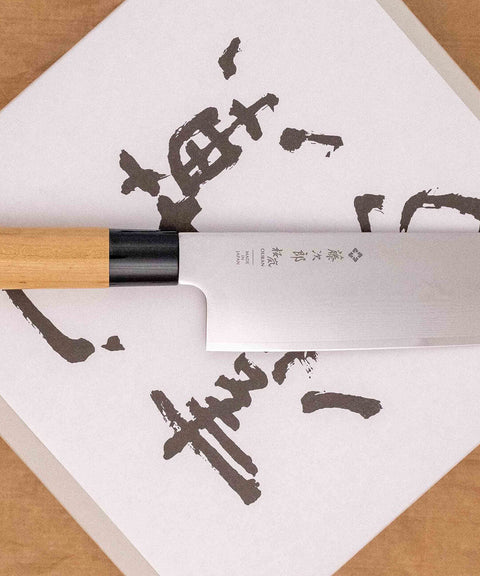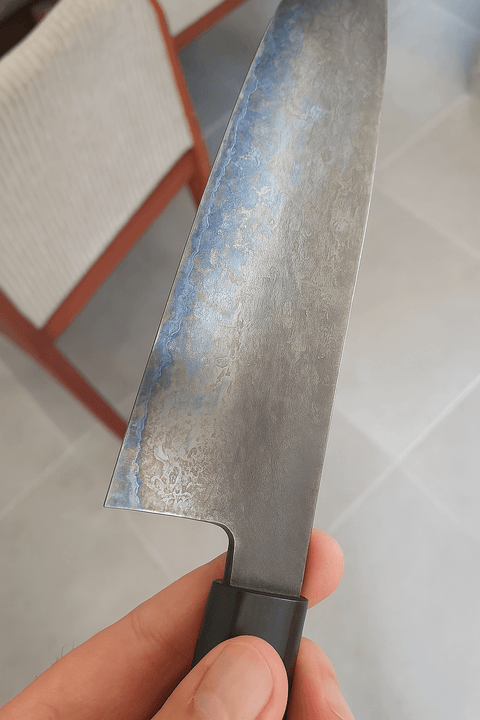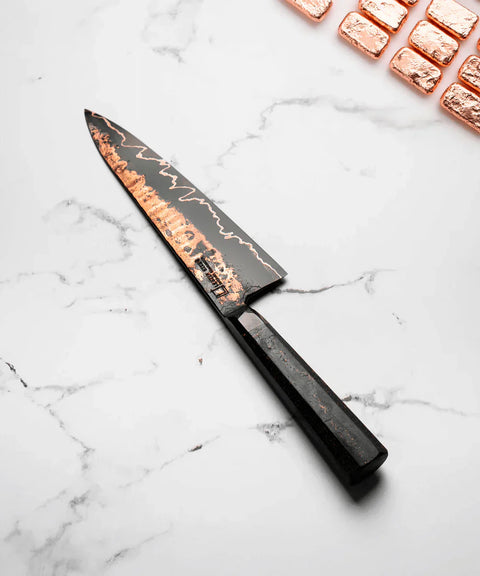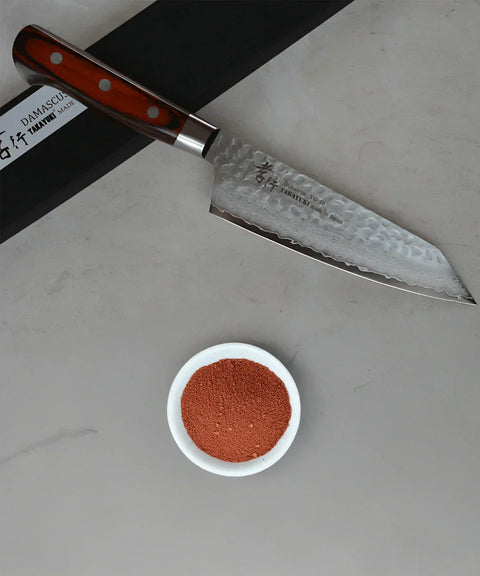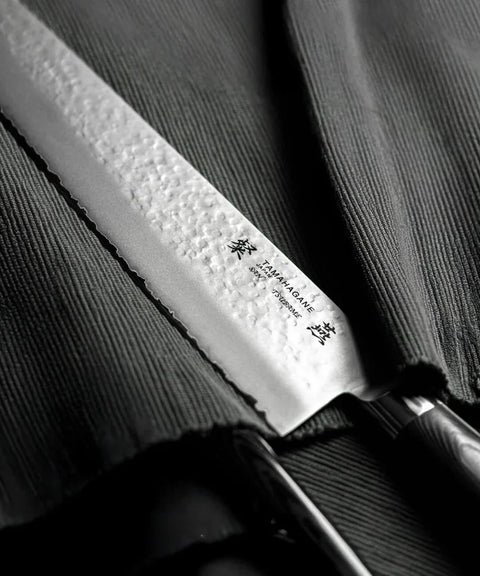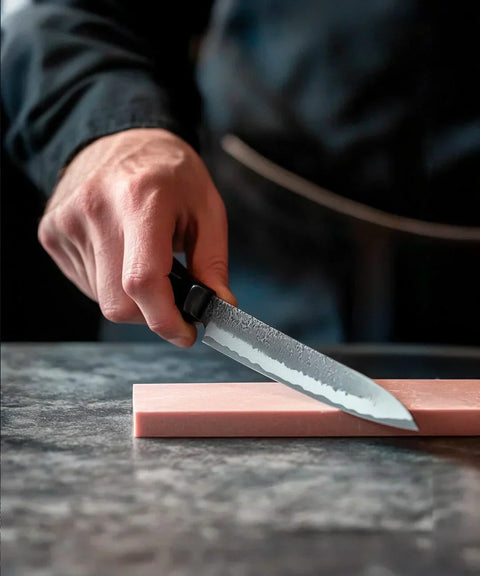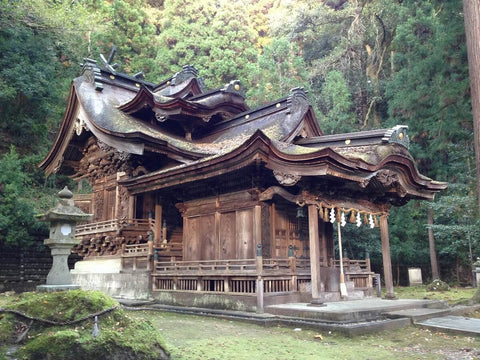Many people wonder how to say knife in Japanese . The short answer is Hōchō (包丁) , but behind this word there is a whole story that connects with samurai...
Irogane is a Japanese term referring to non-ferrous metal alloys traditionally used in silversmithing and cutlery for decorative or functional details, such as rings, ferrules, or handle embellishments. These alloys...
Honyaki is the most traditional and demanding forging method in Japanese cutlery. It involves making the knife from a single piece of high-quality steel, without layers or laminates. The tempering...
Hagane is the Japanese term for the steel that forms the hard core and edge of traditional knives. It is used to refer to both carbon steels (such as Shirogami...
Ginsan , also known as Silver #3 or Ginsanko , is a type of Japanese stainless steel highly prized in traditional cutlery. This steel offers excellent edge retention and ease...
Fukui is a prefecture in Japan renowned for its tradition of knife and cutting tool forging. Located in the Hokuriku region, Fukui is home to historic workshops where artisans combine...
What is patina on a Japanese knife and why can it be good ? 1. What is patina and why does it appear? Patina is a thin layer of oxidation...
Why is the Gyuto the most beloved knife by chefs? The Gyuto knife is the Japanese equivalent of the Western chef's knife , but thinner, sharper, and more elegant. It...
¿Por qué confiar en un cuchillo Santoku? Cuando se trata de versatilidad en la cocina japonesa, el cuchillo Santoku no tiene rival. Su nombre significa "tres virtudes", refiriéndose a su...
Japanese knives are a work of art and precision. But no matter how well made they are, if you don't take proper care of them, their edge will be ruined....
Today at Ryo Miura Japan , we'll show you the essential steps to know if your Japanese knife is sharp. Don't miss it. 1. The invisible edge: it is noticeable...
Echizen is one of the most iconic regions in the history of Japanese cutlery. Located in Fukui Prefecture, this area is renowned for producing hand-forged artisan knives using traditional techniques...



